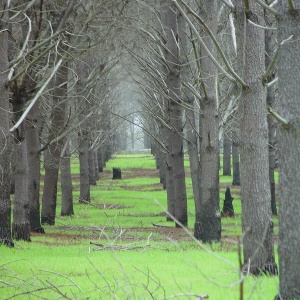
A recent paper uses data from three countries (Ghana, Mexico and Poland) to determine whether more carbon can be kept in above-ground stocks by land sparing (increasing farms yields to minimise the conversion of natural habitats to farmland) or land sharing (increasing carbon stocks on farms, at the cost of converting more natural habitat to farmland because of lower yields). Land sparing maintained the highest above-ground carbon stocks in all cases studied.
The paper did not calculate below-ground carbon stocks, but points out that below-ground carbon stocks usually correspond closely to above-ground carbon stocks. If true, this would mean that the paper’s findings would still hold true when both above- and below-ground carbon stocks are considered.
Abstract
The loss of carbon stocks through agricultural land-use change is a key driver of greenhouse gas emissions, and the methods used to manage agricultural land will have major impacts on the global climate in the 21st century. It remains unresolved whether carbon losses would be minimized by increasing farm yields and limiting the conversion of natural habitats (“land sparing”), or maximizing on-farm carbon stocks, even at the cost of reduced yields and therefore greater habitat clearance (“land sharing”). In this paper, we use field surveys of over 11,000 trees, in-depth interviews with farmers, and existing agricultural data, to evaluate the potential impacts of these contrasting approaches, and plausible intermediate strategies, on above-ground carbon stocks across a diverse range of agricultural and natural systems. Our analyses include agroforestry and oil palm plantations in the humid tropics of Ghana; cattle ranching in dry tropical forest in Mexico; and arable cropping in temperate wetlands and forests in Poland. Strikingly, despite the range of systems investigated, land sparing consistently had a higher potential to sustain regional above-ground carbon stocks than any other strategy. This was the case in all three regions and at all plausible levels of food production, including falls in demand. However, if agricultural production increases to meet likely future demand levels, we project large decreases in above-ground carbon stocks, regardless of land-use strategy. Our results strongly suggest that maintaining above-ground carbon stocks will depend on both limiting future food demand and minimizing agricultural expansion through linking high-yield farming with conserving or restoring natural habitats.
Reference
Williams, D.R., Phalan, B., Feniuk, C., Green, R.E. and Balmford, A., 2018. Carbon Storage and Land-Use Strategies in Agricultural Landscapes across Three Continents. Current Biology, 28(15), pp.2500-2505.
Read the full paper here. See also the FCRN report Grazed and Confused? and the Foodsource building block What is the land sparing-sharing continuum?







Post a new comment »